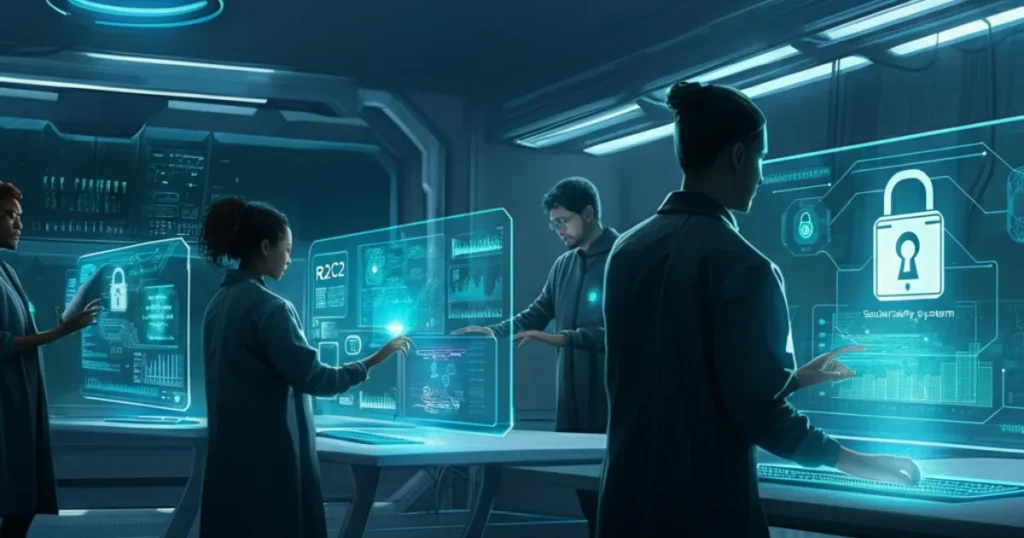Cybersecurity threats are evolving at an unprecedented pace, challenging professionals and organizations worldwide to stay ahead of bad actors. The need for efficient, scalable, and precise solutions has never been more critical. Enter R2C2, a groundbreaking framework designed to streamline risk management, enhance response capabilities, and provide real-time clarity in the chaotic world of cybersecurity.
This guide will unpack R2C2’s core principles, highlight its practical benefits, walk you through how to implement it successfully, and explore real-world applications and advanced techniques. By the end, you’ll gain actionable strategies to leverage R2C2 and reinforce your organization’s security posture.
What is R2C2, and Why Does It Matter?
R2C2 (Risk Reduction and Control Collaboration) is an innovative framework specifically developed to simplify and optimize cybersecurity workflows. It bridges the gap between incident detection, response, and long-term risk mitigation by integrating automation, collaboration, and real-time intelligence. Unlike traditional systems, R2C2 focuses on creating scalable solutions while maintaining robust incident accountability.
Why is it significant?
The magnitude of cyber threats, from phishing scams to ransomware attacks, calls for an adaptable yet precise approach. With its focus on efficiency and transparency, R2C2 equips teams to eliminate blind spots, reduce response times, and drive collaborative prevention efforts.
The Core Principles of R2C2
At its heart, R2C2 revolves around four main pillars that define its distinct methodology and ensure comprehensive coverage across cybersecurity operations.
1. Risk Reduction
Proactively identifying and mitigating vulnerabilities before attackers exploit them. This pillar integrates cutting-edge analytics and real-time threat intelligence.
2. Control Implementation
Developing and deploying robust security protocols to minimize gaps. Automation tools play a prominent role in scaling these controls.
3. Collaboration
Facilitating communication between cybersecurity teams, software developers, and external stakeholders. Teams must share insights to maintain proactive defense networks.
4. Continuous Improvement
Cybersecurity is dynamic. R2C2 emphasizes iterative learning from past incidents, ensuring the framework evolves in tandem with evolving threats.
Benefits of Implementing R2C2 in Cybersecurity
Adopting R2C2 offers clear advantages for cybersecurity professionals and organizations facing complex security challenges.
1. Faster Response Times
By using real-time monitoring and automated detection systems, R2C2 drastically reduces Mean Time to Detect (MTTD) and Mean Time to Respond (MTTR) metrics.
2. Improved Risk Visibility
The framework provides dynamic dashboards and heatmaps that illuminate areas of concern, ensuring that teams know where to focus.
3. Enhanced Collaboration
With its cross-functional alignment, R2C2 enables diverse teams to work synergistically instead of in isolated silos, improving response effectiveness and system-wide cohesion.
4. Cost Efficiency
By streamlining workflows and reducing manual errors, R2C2 minimizes operational overhead and saves resources.
Step-by-Step Guide to Using R2C2 Effectively
Leverage the following steps to successfully deploy an R2C2 framework in your organization.
Step 1. Assess Current Vulnerabilities
Perform a baseline risk assessment of your infrastructure to identify existing vulnerabilities and potential entry points.
Step 2. Deploy Automation Tools
Implement automated tools like SOAR (Security Orchestration, Automation, and Response) platforms that align with R2C2’s risk management workflows.
Step 3. Define Collaborative Protocols
Set ground rules for collaboration by defining roles and workflows for internal teams and third-party vendors.
Step 4. Leverage Real-Time Dashboards
Implement network threat visualization tools capable of flagging suspicious activity in real-time for better situational awareness.
Step 5. Run Regular Simulated Attacks
Conduct penetration tests and simulate breach scenarios to identify system gaps and train your team for optimal response behavior.
Step 6. Document and Iterate
Document lessons learned from incidents and simulations, using those as a foundation for continuous process improvement.
Advanced Techniques and Customization Options
For organizations aiming to push R2C2’s boundaries, several advanced techniques and tools can take its implementation to the next level.
- Integration with AI
Pair R2C2 with AI-driven tools like behavioral analysis systems to enhance data precision and threat prediction accuracy.
- Multi-region Incident Management
Customizing R2C2 workflows to include multi-region operations ensures comprehensive coverage for enterprises with a global footprint.
- Custom Alert Prioritization
Tailor alerting thresholds to align with your specific industry’s threat landscape, avoiding alert fatigue.
Real-World Examples of R2C2 in Action
Seeing R2C2 in real-world applications illustrates its practical value.
- Financial Sector
A multinational financial institution faced a phishing campaign targeting high-level executives. R2C2 detected anomalies early, deployed automated isolation protocols, and reduced incident remediation time by 60%.
- Healthcare
A hospital network benefitted from R2C2 by stopping ransomware dead in its tracks. The proactive implementation of automated backups and continuous monitoring ensured patient data remained uncompromised.
- E-commerce
An online retailer used R2C2 to map risks in its supply chain—including third-party software vulnerabilities—which resulted in a 75% reduction in downtime from attempted breaches.
Overcoming Common Challenges
Implementing R2C2 isn’t without challenges. Here’s how to address them effectively.
Challenge 1. Resistance to Change
Problem: Employees may resist the adoption of new tools and workflows.
Solution: Offer clear training programs, and highlight the measurable benefits of R2C2 implementation.
Challenge 2. Data Silos
Problem: Isolated data sources hinder seamless operation.
Solution: Centralize data repositories and emphasize collaborative platforms.
Challenge 3. Balancing Automation with Oversight
Problem: Over-reliance on automation could result in overlooked nuances.
Solution: Regularly audit system logs and assign critical alerts to human analysts.
What the Future Holds for R2C2
As cyber threats evolve, so too will R2C2. Emerging technologies like quantum computing and zero-trust architectures will integrate seamlessly with R2C2’s foundational principles. Its role in protecting organizations from increasingly sophisticated threat actors will only grow.
Keeping pace with R2C2 advancements will be essential for cybersecurity professionals and organizations focused on securing the future.
Secure Your Systems with R2C2 Today
R2C2 isn’t just a trend; it’s a necessity for modern cybersecurity. The framework’s adaptability, efficiency, and collaborative capabilities position it as a vital tool for professionals in this field.
Whether you’re a cybersecurity leader implementing new protocols or a developer looking to build robust systems, R2C2 equips you with the tools necessary to succeed. Start implementing R2C2 in your organization today and elevate your security operations to unprecedented levels.






